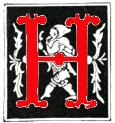

enry Nelson O'Neil, ARA (1817-1880) was born when his British parents were in St Petersberg, arriving in England at the age of six, and entering the Royal Academy Schools at the time when several other members banded together to form The Clique, the early Victorian band of artists in which context he is most often mentioned. Among the best known of the group were William Powell Frith, Richard Dadd and John ("Spanish") Phillip. Like them, and indeed to a greater extent, he was against the ideas espoused by the Pre-Raphaelites. He painted a pair of satirical pictures aimed at them, showing them in the British Institution's exhibition of 1857. Here the Art-Journal reviewer spotted them and wrote, "No. 483. ‘The Two Extremes — The Post-Raphaelite,’ H. O’Neil. This and ‘The Pre- Raphaelite' by the same artist, illustrate these opponent Art-theories, with some causticity of allusion to the latter" (72).
O'Neil later expressed his opinion forcibly in one of his written works, when he published his 1866 Lectures on Painting delivered at the Royal Academy. In his first lecture, he states unequivocally, "The means employed in the art of painting, however powerful and characteristic, are, nevertheless, so limited, that in depicting any object or scene in nature, it is necessary for the artist to select those features which shall give the best idea of the whole nor is it possible, by the mere imitation of details, to arrive at a true rendering of the impression that Nature makes on the mind of the spectator" (9). In O'Neil's opiniom, too much detail destroyed the spirit of the work. It is interesting, then, that the Art-Journal reviewer had described another of his works, A Picnic as "careful but hard" (70), as if to suggest that the spirit of his subject had, on that occasion, eluded him too.
Be that as it may, O'Neil reached the height of his popularity with Eastward Ho!, a touching and cleverly composed work showing soldiers leaving for India to help suppress the 1857 uprisings. Lionel Lambourne writes that his success with this one at the Royal Academy's annual exhibition was "rivalled only by Frith's Derby Day (363). O'Neil's capitalised on his success with a painting of the men returning, entitled simply Home again (1859). It featured some of the same faces, but with far different expressions, the men both wounded and worn out — but, as Jeremy Paxman maintains, still heroes: "When engravings were offered for sale shortly after, the demand was overwhelming" (184). However, these triumphs, which spoke to the imperialistic fervour of the time, not to mention the thirst for revenge for atrocities on the other side, were not repeated. — Jacqueline Banerjee
Works
Bibliography
Hichberger, J. W. M. Images of the Army: The Military in British Art, 1815-1914. Manchester: Manchester University Press, 1988.
Lambourne, Lionel. Victorian Painting. London and New York: Phaidon, 1999.
O'Neil, Henry Nelson. Lectures on Painting delivered at the Royal Academy. London: Bradbury, Evans & Co., 1866. Internet Archive. From a copy in the University of Michigan Library. Web. 30 December 2022.
Paxman. Jeremy. The Victorians: Britain through the Paintings of the Age. London: BBC Books, 2009.
Created 30 December 2022